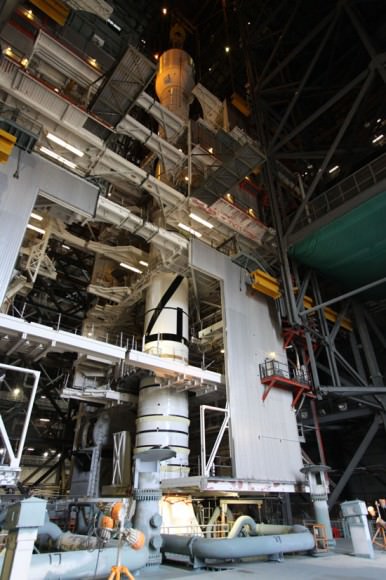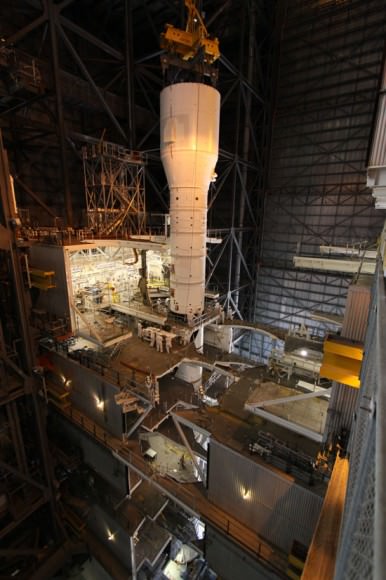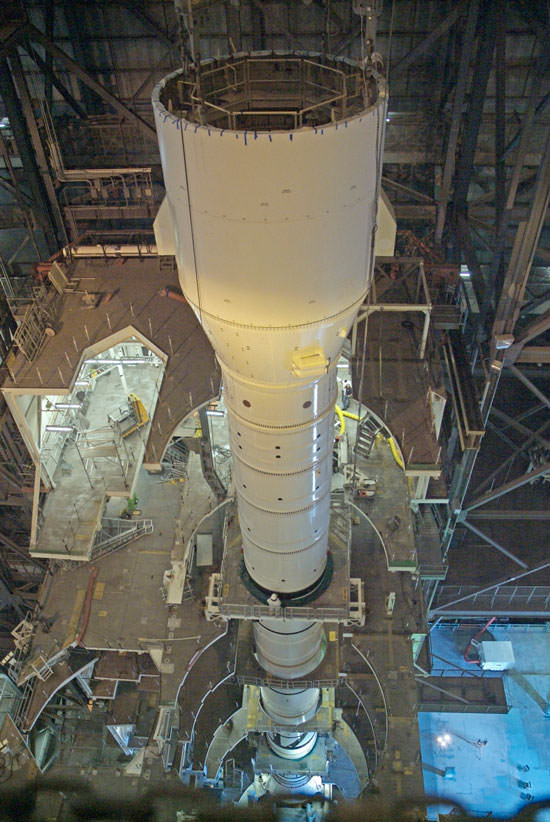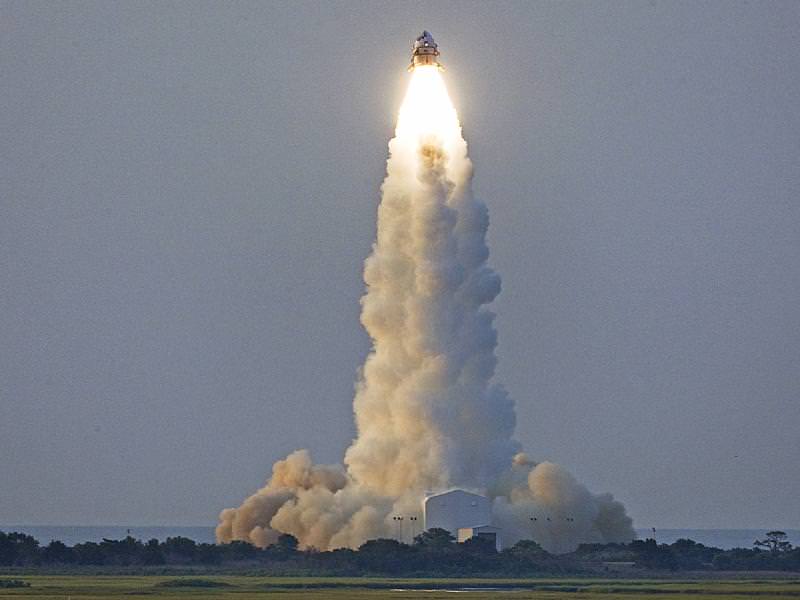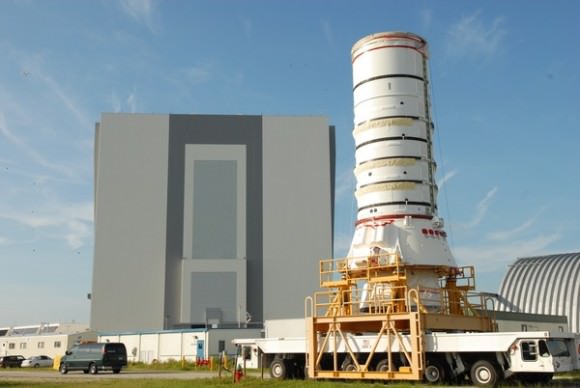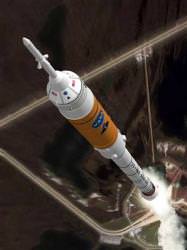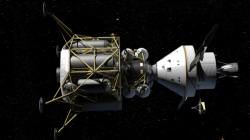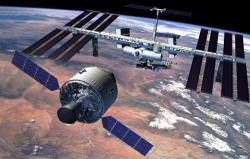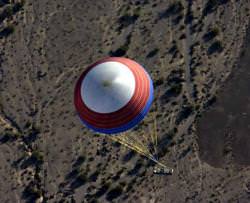Work is progressing on designing the new Orion Crew Exploration Vehicle (CEV), the next generation of NASA spacecraft that will take humans to the International Space Station, back to the Moon, and hopefully on to Mars. But one major question about the spacecraft has yet to be answered. On returning to Earth, will the CEV splash down in water, or land on terra firma?
NASA officials discussed various aspects of development that is currently underway for the Constellation program at a media briefing on December 10. The mobile launch platform for the Ares rocket is being built, landing parachutes have been tested and the first capsule structure of the new CEV will be constructed starting in early 2008. Design requirements for the booster rockets have been completed and just ahead are final design definitions for operational capabilities such as ground procedures at Kennedy Space Center, mission control in Houston and other areas such as spacesuit design.
Additionally research on the International Space Station has begun to help prepare for long duration spaceflights such as a measurements of microbe growth, a study of the formation of kidney stones, and a nutritional study to help understand what is “normal” for the human body in space.
But questions from the media focused mainly on the yet unmade decision of whether the CEV will land in the water or on land.
NASA originally explored multiple options for landing in both water and land. After initial studies, the first assessment by NASA and the contractor for the CEV, Lockheed Martin, was that landing on land was preferred in terms of total life cycle costs for the vehicles. But now a splashdown in water seems to be favored.
“There are a couple of aspects that pop out at us,” said Jeff Hanley, Manager for the Constellation Program. “One is the safety and the risks involved in landing. Looking at the landing itself, the event of actually touching down, water comes out to be preferable as less risk. Another aspect is the performance of the Orion vehicle as it is sent to the moon. In looking at what it takes to get a pound of spacecraft to low lunar orbit in terms of the cost, every pound that you send toward the moon is precious. From an efficiency and performance point of view, carrying 1500 lbs of landing bags to the moon and back when we have a perfectly viable mode of landing in the water near a US coastal site didn’t seem like a good trade in performance. We’ve tended toward updating our point of departure concept to now be a nominal US coastal water landing.”
The Constellation program has always considered that for the first few missions, the spacecraft would land in water until the guidance system had been tested thoroughly and proven in actual landings.
But NASA is continuing to look at landing on land as a possibility for future flights. “We want to be able to land on land in a contingency and have the crew be able to get out and walk away. Ther are limitation of what you can do on land but by the time we get done really looking at what the minimal capability of landing on land and having the crew walk away, we’ll see what the design looks like, and if the design is robust enough we could return to having nominal land landings.”
One challenge for the Constellation program has been getting the CEV light enough for the Ares rockets to be able to launch it, and therefore eliminating the 1500 lb airbags for landing has its appeal.
“The predominant design philosophy for Orion and Ares 1 has been that we are designing for lunar missions,” continued Hanley. “We will service the International Space Station within that set of capabilities. From that perspective, designing a lot of mass into the spacecraft just to enable land landings has not traded out to be an effective use of our performance. That’s the major consideration in play. Right behind that are life cycle costs.”
Making the decision of land vs. water is the goal for 2008 for the Constellation program. “We’ve studied and have cost estimates for water landings against the infrastructure costs of having multiple landing sites on land and they are comparable,” said Hanley. Right now, NASA is looking at a single target landing zone off the coast of California with one or two recovery vessels.
But they are keeping their options open for a land landing. “If the Orion team is able to come in at the preliminary design review later this next year with a concept for be able to land on land that is fairly robust but not cost a lot of mass to have to hurl to the moon and back, then it becomes an operational decision,” said Hanley.
There has been much debate about what type of landing would be best. “There’s been a lot of assumptions made that landing on land is going to be better, but there are lot of people in the technical community that do not buy into that,” said Hanley. “There’s been a lot of debate surrounding whether or not land landing truly is better from a life cycle cost perspective and there isn’t a lot of quantitative data to really pull from.”
Hanley feels there are assumptions being made but not a lot of substantive date to clarify what the right answer is. So the next steps are to get the spacecraft to a detailed preliminary design and really interrogate the water vs. land issue. That includes further developing the operational concepts , such as how long does the capsule stay in the water, and what loads does the spacecraft see from landing on water and land. Those are all questions that need to be answered in order to make a final decision on the type of landing that will be used.
Stay tuned, as 2008 should be a year of decision for many details about Constellation and the CEV.
Original News Source: NASA News Audio
